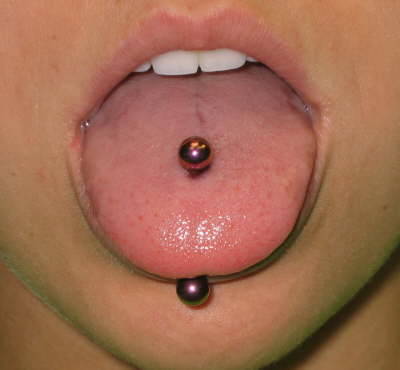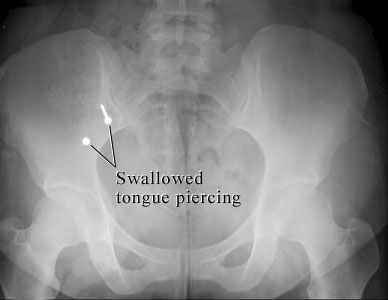This video is for nurses, phsyicians, medics, and anyone else who has to put one of these on. Looks simple, but there are some nuances you need to know about.
Category Archives: Tips
Tongue Piercings And Emergency Intubation
Urgent and emergent intubation is challenging enough, but what if your patient is sporting some type of tongue piercing? Does it make a difference? Do you need to do anything differently?

Obviously, the jewelry may physically impede the process of intubating the patient, impairing visualization of structures or getting in the way of inserting the tube. It can also cause complications later down the road, such as pressure necrosis from the tube coming into contact with it.
The anesthesia literature recommends removing all oral jewelry prior to elective intubation, or declining to do the case if the patient refuses. Unfortunately, trauma professionals do not have that option when the patient needs an emergency airway.
Here are some pointers for dealing with oral jewlry:
- Is the item going to impede insertion of the airway? Is it large, or obstructing the usual tube pathway? If so, remove it quickly (see below).
- Sweep the tongue well to the side during tube insertion to avoid the jewelry. You may need an assistant to grasp it with gauze to keep it out of the way.
- Once the airway is secured, remove the item. This takes two people! The ET tube should be moved to the side, and one person will grasp the tongue with a gauze pad and extend it. The other person can then grasp the jewelry with gloved fingers, and unscrew the ball on one side. It can then be removed and saved in an envelope.
Note: both hands must always be in contact with the jewelry at all times! It is slippery, and if the pieces are not controlled, this can happen!

When To Remove a Chest Tube
Chest tubes are needed occasionally to help manage chest injuries. How do you decide when they are ready for removal?
Unfortunately, the literature is not very helpful in answering this question. To come up with a uniform way of pulling them, our group looked at any existing literature and then filled in the blanks, negotiating criteria that we could all live with. We came up with the following.
Removal criteria:
- No (or a minimal, stable) residual pneumothorax
- No air leak
- Less than 150cc drainage over the past 3 shifts. We do not use daily numbers, as it may delay the removal sequence. We have moved away from the “only pull tubes on the day shift” mentality. Once the criteria are met, we begin the removal sequence, even in the evening or at night.
Removal sequence:
- Has the patient ever had an air leak? If so, they are placed on water seal for 6 hours and a followup AP or PA view chest x-ray is obtained. If no pneumothorax is seen, proceed to the next step.
- Pull the tube. Click here to see a video demonstrating the proper technique.
- Obtain a followup AP or PA view chest x-ray in 6 hours.
- If no recurrent pneumothorax, send the patient home! (if appropriate)
How To: Chest Tube Insertion For Trauma
Here’s a short video that shows you everything you need to know. Enjoy!



